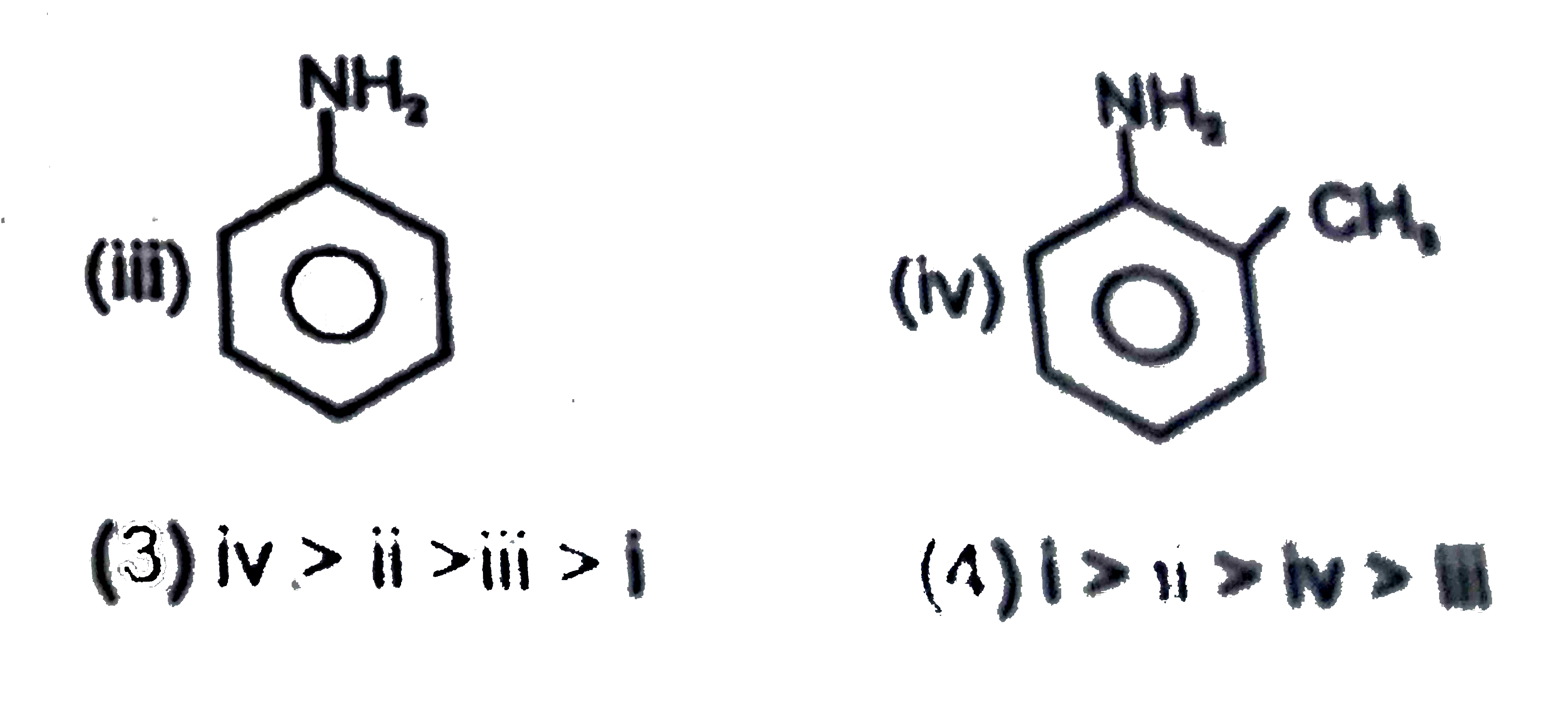
When a nucleophile attack to carbonyl group of a carboxylic acid derivative, the carbon-oxygen π- bond breaks. The resulting intermediate is called a tetrahedral intermediate because sp2 carbon in the reactant has become a tetrahedral (sp3) carbon in the intermediate.
Here ..Yɵ is leaving group, the weaker base is expelled preferentially.
Q. Which of the following given compounds don't form amide, when react with CH3COCl.
(1). CH3−NH−CH3
(2). CH3−N∣CH3−CH2H5
(3). 
(4). CH3−CH2−CH2−NH2
A
1 and 4
B
only (4)
C
2 and 3
D
only (1)
Video Solution
Text Solution
The correct Answer is:B
Tertiary amine and pyridine doesn't from amides when react with CH3−C∣∣O−Cl
|
Updated on:21/07/2023
Similar Questions
Knowledge Check
- Question 1 - Select One
The type of isomerism shown by the following compounds is
CH3CH2CH2CH2CH3,CH3−CH3∣CH−CH2CH3,CH3−CH3∣C∣CH3−CH3Aposition isomerismBmetamerismCring-chain isomerismDchain isomerism - Question 2 - Select One or More
Which of the following form Schiff's base with CH3−NH2?
AH3C−O∣∣C−HBH5C6−O∣∣C−HCCH3−CH2−OHDH−O∣∣C−OH - Question 3 - Select One
Fill in the reagents for the given conversion :
CH3COCl(X)−−→CH3CHO(Y)−−→CH3−OH∣CH−CH2CHO(Z)−−→CH3CH=CHCHOAXYZH2/Pd/BaSO4dil. NaOHheatBXYZNaOHHydrolysisheatCXYZI2/NaOHLiAlH4H3O+DXYZCrO3WarmCO2
The correct order of basicities of the following compounds is -
(I)_E01_945_Q01.png) , (II) CH3CH2NH2 : (III) (CH3)2NH , (IV) CH3−O∣∣C−NH2⎞⎟
⎟⎠View Solution
, (II) CH3CH2NH2 : (III) (CH3)2NH , (IV) CH3−O∣∣C−NH2⎞⎟
⎟⎠View SolutionWhich of the following is correct order of basic strength for the given compounds ?
(i)CH3−CH3−C−NH2∣∣NH (ii)CH3−C−CH3∣∣NH
 View Solution
View SolutionWhich of the following compounds is most susceptible to a nucleophilic attack at the carbonyl group?
(a)CH3COOCH3
(b)CH3CONH2
(c)CH3COOCOCH3
(d) CH3COClView SolutionSate the nature of hybridisation of each carbon atom in the following compounds ?
(a)CH3Cl (b)(CH3)2C=O (c)CH3−C≡N (d)H−O||C−NH2 (e)CH3−CH=CH−C≡NView SolutionArrange nucleophilicity of given species in decreasing order:
(1) CH3−өCH2
(2) CH3−өO
(3) өNH2
(4) өFView Solution

